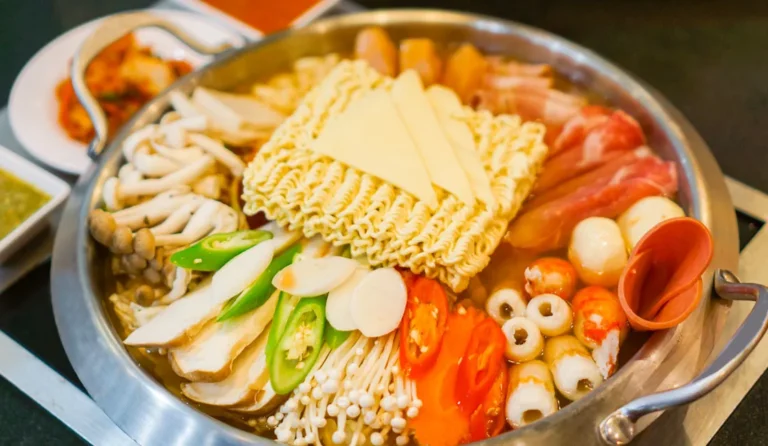Introduction to Cambodian Cuisine
Cambodian cuisine is a unique blend of flavors, ingredients, and cooking techniques that reflect the country’s cultural diversity. From sweet to salty, sour to spicy, Cambodian food is a true reflection of Khmer cuisine, which is influenced by Chinese, Indian, and Thai culinary traditions. Cambodian cuisine is known for its use of fresh herbs, spices, and vegetables, highlighting the importance of a balanced diet.
The cuisine also emphasizes the importance of rice, which is used in almost every meal. Cambodian dishes are typically served family-style, with an emphasis on sharing and community. The cuisine is diverse and complex, reflecting the country’s rich history and cultural traditions.
The Key Ingredients of Cambodian Cooking
Cambodian cuisine is characterized by the use of fresh herbs, spices, and vegetables, with an emphasis on balancing flavors. The cuisine is known for its use of lemongrass, galangal, and kaffir lime leaves. Other common ingredients include garlic, shallots, ginger, and chilies.
Fresh herbs such as cilantro, mint, and basil, are an essential part of Cambodian cooking. Vegetables such as green beans, bok choy, and watercress are also commonly used. Cambodian cuisine is known for its use of fish, meat, and poultry, with seafood being a staple in coastal regions. Fermented fish sauce, a signature ingredient in Cambodian cuisine, is used to add depth and complexity to dishes.
Rice – the Staple of Cambodian Cuisine
Rice is the staple food in Cambodian cuisine, serving as the foundation of almost every meal. Cambodians typically eat rice with every meal, either steamed or fried. Varieties of rice commonly used in Cambodia include jasmine, glutinous, and black rice.
Rice is often accompanied by stir-fried vegetables, meat, and fish. Fried rice is also a popular dish, which is typically served with vegetables, soy sauce, and eggs. Cambodian cuisine emphasizes the importance of a balanced diet, which includes a variety of proteins, vegetables, and carbohydrates.
Fresh Vegetables – A Vital Component
Fresh vegetables are a vital component of Cambodian cooking. Cambodian cuisine emphasizes the use of fresh, locally sourced vegetables, which are often stir-fried or served raw. Vegetables commonly used in Cambodian dishes include green beans, carrots, bok choy, and cabbage.
Cambodian cuisine also highlights the use of herbs such as cilantro, mint, and basil, which add fresh flavors to dishes. Vegetables are often served alongside rice and meat or fish, with an emphasis on balancing flavors and creating a healthy meal.
Fish, Meat and Poultry – Key Protein Sources
Fish, meat, and poultry are key protein sources in Cambodian cuisine. Fish is a staple in coastal regions, with dishes such as fish amok, a traditional Khmer dish made with fish, coconut milk, and spices.
Meat dishes commonly found in Cambodia include beef and pork stir-fries, while poultry is used in dishes such as chicken curry. Cambodian cuisine emphasizes the importance of balancing flavors, with an emphasis on using fresh ingredients and spices to create depth and complexity in dishes.
Cambodian Herbs and Spices: Flavor Enhancers
Cambodian cuisine is known for its use of fresh herbs and spices to enhance the flavors of dishes. Lemongrass, galangal, and kaffir lime leaves are commonly used in Cambodian cooking, adding fragrance and depth to dishes.
Other common spices include garlic, shallots, and chilies, which are used to add heat and complexity to dishes. Cambodian cuisine emphasizes the importance of balancing flavors, with an emphasis on using fresh ingredients to create a healthy and satisfying meal.
Fermented Fish Sauce – A Signature Ingredient
Fermented fish sauce is a signature ingredient in Cambodian cuisine, adding depth and umami flavors to dishes. The sauce is made from fish that has been fermented with salt, creating a pungent and savory sauce.
Fermented fish sauce is used in many Cambodian dishes, including fish amok and chicken curry. Cambodian cuisine emphasizes the importance of balancing flavors, with an emphasis on using fresh ingredients and spices to create depth and complexity in dishes.
Desserts and Snacks in Cambodian Cuisine
Cambodian cuisine features a range of desserts and snacks, including sweet sticky rice and mango, and fried bananas. Cambodian desserts often feature coconut milk and palm sugar, creating sweet and satisfying treats.
Snacks include savory dishes such as num pang, a sandwich made with meat and pickled vegetables, and spring rolls filled with meat and vegetables. Cambodian cuisine emphasizes the importance of balance, with an emphasis on using fresh ingredients and spices to create healthy and satisfying meals.

